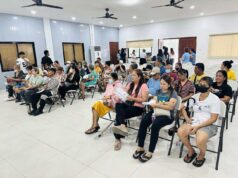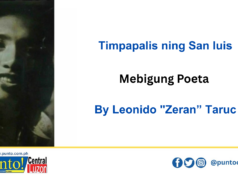KYOTO, Japan – In waves, surging wave after unebbing wave, they come. From all over Japan, the world as well. To be awed, to marvel – not at some ancient grand temple or the latest invention, but at a forest of bamboo.
Second only to the golden pavilion of Kinkaku- ji as the old capital’s top tourist draw is the Arashiyama Bamboo Grove.
A circuitous path through towering bamboos – their leafy tops forming a canopy of green at some points – leads uphill, peaking by the gate of the Okochi- Sanso Villa, the estate of the period film actor Denjiro Okochi, which many tourists simply pass – with but some photo ops for the record – to proceed downhill to a small shrine by a small lake before ending their tour.
It’s only bamboo, picturesque though it maybe. So what draws the tourists to Arashiyama? Comes a feeling of serenity under the green shade of bamboos, the wind whistling though them, their stalks rocking rhythmically, pure Zen moments there.
The spirit, okay, meditative, journey continues to the nearby – a ten-minute “senior” walk from the bamboo grove – Tenryu-ji Temple, which share of tourists is much lesser than the bamboo grove’s.
In all probability, it is the bamboos that serve as engines of economic growth in the community, generating livelihood enterprises – from restaurants to ramen and tea houses, from souvenir stores to bikerental shops and pension houses – in the immediate neighbourhood abutting the Saga-Aroshiyama Station.
Can do
So, why don’t we have this back home? Thinks the Filipino tourist, well aware of bamboos of various varieties readily growing in just about every part of the country,
Pampanga for this purpose specifically. Yes, Pampanga can even better Arashiyama. No mere bamboo groves now in some cluster areas – up the slopes of the Porac or Floridablanca mountains, down the tributaries of the Pampanga River in Minalin or Sasmuan- Guagua-Lubao coastlands – but arts and crafts related to the bamboo as value-added attractions.
Engage in thebamboo cluster areas performances by Peter de Vera’s Sinukwan Kapampangan Performings Arts talents of tinikling, sakuting and some other dances celebrating the bamboo. Build there an authentic bahay kubo of bamboo, sawali, and nipa- thatched roof.
Along with a vegetable garden with a trellis made of bamboo as centrepiece. Operate a native restaurant with binulu and labong as main entrée. Alongside grilled fish and meat skewered with bamboo sticks. Set shops selling souvenirs made of bamboo – fans, mugs, walking canes, etc. – as well as finished bamboo products like baskets, bags, jewellery boxes, chairs, bird cages – the product line is as far-reaching as any craftsman’s imagination.
Bamboo body It has been a long while since anything was heard of the Provincial Bamboo Council at the Capitol. It has been as long since any project proposal relative to bamboo – propagation or use – cropped up in he province.
The last was that of former Technology Resource Center Director- General Dennis Cunanan for massive bamboo planting with an eye to the demands of Chinese and Japanese restaurants for utensils made of bamboo.
“There is money, big money, in bamboos,” Cunanan was wont to say then, thinking only of toothpicks and chopsticks. Hopefully, somebody at the Capitol will take it from here. And give Arashiyama a run for its tourists and their money.



